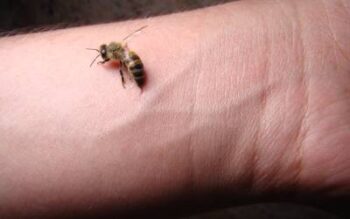Water conservation is on everyone’s mind these days. Whether you are dealing with drought in California or fighting the high cost of your month Florida water bill, water conservation is a must. In this article, we discuss some of the ways that property owners can save water using their current irrigation system and equipment.
Maintenance: Check The Sprinkler Heads And Line Emitters
While irrigation systems are fairly simplistic in terms of their parts, some of their parts are quite small. Sprinkler heads and drip irrigation emitters can become clogged. The backup of pressure from a clogged sprinkler head or emitter can cause leaks.
In the case of a clogged or broken sprinkler the signs may include a geyser or something more subtle. Sometimes you end up with is a green spot around the sprinkler head and a brown spot or ring farther out from the sprinkler. Both are indicators that the sprinkler head is not working properly and needs replacing.
In the case of a clogged emitter, you may notice plants drooping at the site of the clog. If the emitter has come off or there is a leak, you will notice that plants begin to droop or die farther down the drip line. This is because when you have a leak in an irrigation line, the pressure inside the line drops and the water does not make it to the end of the line—the plants at the end of the line suffer more than the plants do near the leak. The same goes for potentially broken pipes.
The Idea Of Saving Water
At the core of water conservation is efficiency. Regular maintenance of any irrigation system including drip irrigation helps to conserve water, but the idea of efficiency goes further than just maintenance. For sprinklers, it involves spray zone, which is the area that a single sprinkler head can water. Sprinkler heads are set up to over spray as part of an efficient watering system. A lot of people consider this wasting water, but in fact it is one of the best ways to conserve water. When sprinklers are set up to help each other out, you spend less time watering—this is exactly how you save water. The spray zone of a sprinkler is not even. There is more water available near the pipe then at the end of the spray zone. When sprinklers spacing is too far apart, they require longer water cycles so that the end of the spray zones receive enough water. What happens near the pipe is over watering, and that wastes water. While performing the maintenance on your system, check the spray zones of the sprinklers. You can correct this wasteful practice by switching out sprinkler heads with ones that provide more coverage.
If you have drip irrigation, ask a professional to evaluate your system. The type of emitters that you have may be too large or too small for the types of plants included in your landscape. This is often the case with shrubs that grow tall and often outgrow their watering system. Using different size emitters in an area allows every plant to be watered appropriately. This may mean installing larger emitters for trees and shrubs or cutting back on the size of emitters for annuals. The idea is to use just enough water to meet your landscaping needs without over watering. The result is that you have healthier plants, and you are not wasting money by wasting water.
For more tips about how to conserve water, contact the experts at Bug Out. They can offer advice on lawn care, irrigation and pest management.




